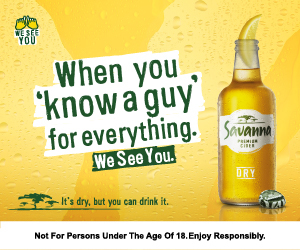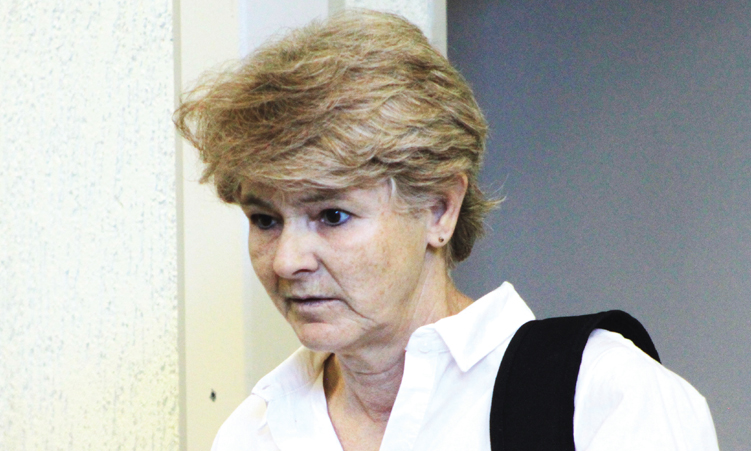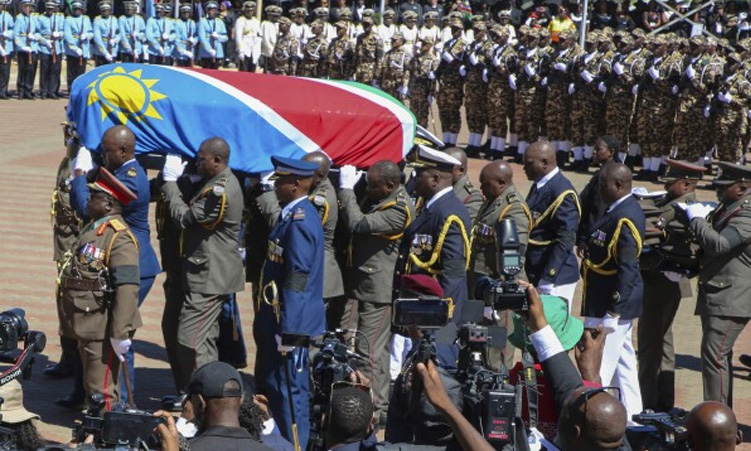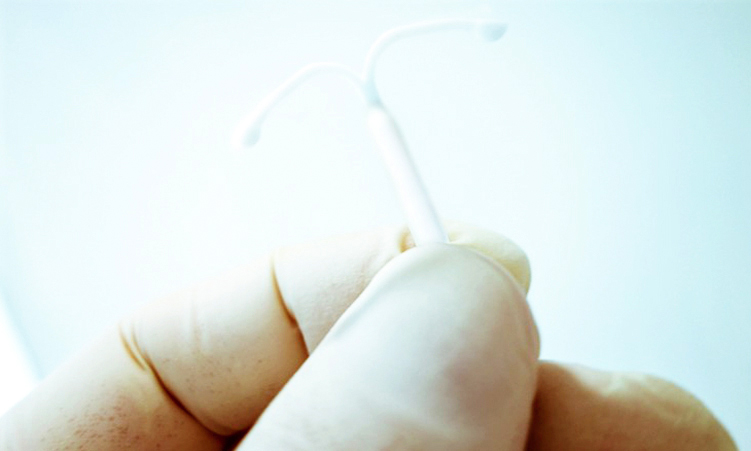EVER since she can remember Suzan Mallet-Veale has had a special place in her heart for birds.
She grew up on a farm near Seeeis east of Windhoek, but stayed in a school hostel as child, where she could not give free rein to her passion for birds. She later moved to South Africa for work and there she kept and looked after a few doves.After returning to Namibia in 1980 she could give full attention to her passion.People from all over the country bring injured birds to Mallet-Veale and she looks after them until they are well enough to be released into the wild.Windhoek veterinarians also bring injured birds to her.Suzan looks after all kinds of birds except raptors.When she receives a bird of prey, she calls Narrec for help.There has never been a time when Mallet-Veale did not have a few birds to look after.She recalls a time when an apartment block was demolished and 12 swifts needed looking after and ended up with her.At the time she already had other birds needing attention and ended up looking after 23 birds at once.This was the largest number of birds she ever had to take care of and also her biggest challenge.Mallet-Veale releases all the birds in her care as soon as they are strong enough.Adult birds are released as close to the spot where they were found as possible, while baby birds can be released anywhere.Sometimes she drives huge distances to release the birds.”I do not mind driving back to the spot as the feeling I get when that wild bird flies back to freedom is indescribable and worth all the effort,” she says.There is a notable exception to her release policy, though.In 2003 a farmer was driving through the Khomas Hochland to Windhoek and hit a spotted thick knee – a small running bird.When he reached his destination he saw that the bird was still caught between the bakkie’s bull bar and grill.He took the bird to the veterinarian Dr Wolfgang Spaeth, who found that its wing was broken, one of its feet torn off and one eye lost.Dr Spaeth called Mallet-Veale.”We both looked at the bird and it looked very dead and damaged but while we were staring at it, not quite sure as to what our next step should be, the bird got up and that is when I decided to take it home, as it wanted to live,” she recalls.Dikky has been living with her ever since and at night he sleeps under her chair, keeping her company.Dikky’s wing has healed completely and he has a piece of plastic where his foot once was.Although he walks around the house like a perfectly healthy bird, he would stand no chance in the wild because of his missing eye.Being half blind makes him just too vulnerable to predators.A while back Mallet-Veale was chatting with a friend in her garden and left the front door open.The next minute she heard Dikky cry.A mongoose had entered the house and was running through the garden with Dikky in its mouth.”I do not know how or where I got the strength from but I ran and caught the mongoose and freed Dikky.Luckily he was bitten in the dead eye, otherwise he would be blind now.He also had a hole at the bottom of his throat, which made eating and swallowing a bit difficult for a couple of weeks.But Dikky is a survivor and he came through this ordeal this with flying colours.”The experience with Dikky and the mongoose was the scariest she has ever encountered in all her years of caring and looking after birds.Currently she is looking after a barn owl that was found at the Pionierspark cemetery by a member of the Cat Protection Society.The baby owl, called Tytu, had a hurt foot which has now healed and it is ready for release.This is the third owl found at the cemetery and although Suzan does not generally look after raptors she made an exception for Tytu and the two have grown very fond of each other.Tytu will be released on a farm near Seeeis, “where I grew up, and that makes me very happy,” says Mallet-Veale.Through all her years of working with injured birds Suzan has discovered what she needs to feed the birds and when.All baby birds that come to her at first receive a mixture of lean mince, Pro-Nutro and banana to build up their strength.After that the seed-eaters receive seeds and the insect-eaters get lean mince.She has build a ‘hot box’ from Styrofoam in which the birds can be kept warm, as a cold bird does not eat and thus cannot build up its strength.All the cages also have hot water bottles in winter.Besides all the wild birds she looks after, Mallet-Veale has pet budgies, cockatiels and sparrows.”I have always loved birds and to see a broken wild bird heal and eventually fly off again is the greatest feeling and reward,” she says.She later moved to South Africa for work and there she kept and looked after a few doves.After returning to Namibia in 1980 she could give full attention to her passion.People from all over the country bring injured birds to Mallet-Veale and she looks after them until they are well enough to be released into the wild.Windhoek veterinarians also bring injured birds to her.Suzan looks after all kinds of birds except raptors.When she receives a bird of prey, she calls Narrec for help.There has never been a time when Mallet-Veale did not have a few birds to look after.She recalls a time when an apartment block was demolished and 12 swifts needed looking after and ended up with her.At the time she already had other birds needing attention and ended up looking after 23 birds at once.This was the largest number of birds she ever had to take care of and also her biggest challenge.Mallet-Veale releases all the birds in her care as soon as they are strong enough.Adult birds are released as close to the spot where they were found as possible, while baby birds can be released anywhere.Sometimes she drives huge distances to release the birds.”I do not mind driving back to the spot as the feeling I get when that wild bird flies back to freedom is indescribable and worth all the effort,” she says.There is a notable exception to her release policy, though.In 2003 a farmer was driving through the Khomas Hochland to Windhoek and hit a spotted thick knee – a small running bird.When he reached his destination he saw that the bird was still caught between the bakkie’s bull bar and grill.He took the bird to the veterinarian Dr Wolfgang Spaeth, who found that its wing was broken, one of its feet torn off and one eye lost.Dr Spaeth called Mallet-Veale.”We both looked at the bird and it looked very dead and damaged but while we were staring at it, not quite sure as to what our next step should be, the bird got up and that is when I decided to take it home, as it wanted to live,” she recalls.Dikky has been living with her ever since and at night he sleeps under her chair, keeping her company.Dikky’s wing has healed completely and he has a piece of plastic where his foot once was.Although he walks around the house like a perfectly healthy bird, he would stand no chance in the wild because of his missing eye.Being half blind makes him just too vulnerable to predators.A while back Mallet-Veale was chatting with a friend in her garden and left the front door open.The next minute she heard Dikky cry.A mongoose had entered the house and was running through the garden with Dikky in its mouth.”I do not know how or where I got the strength from but I ran and caught the mongoose and freed Dikky.Luckily he was bitten in the dead eye, otherwise he would be blind now.He also had a hole at the bottom of his throat, which made eating and swallowing a bit difficult for a couple of weeks.But Dikky is a survivor and he came through this ordeal this with flying colours.”The experience with Dikky and the mongoose was the scariest she has ever encountered in all her years of caring and looking after birds.Currently she is looking after a barn owl that was found at the Pionierspark cemetery by a member of the Cat Protection Society.The baby owl, called Tytu, had a hurt foot which has now healed and it is ready for release.This is the third owl found at the cemetery and although Suzan does not generally look after raptors she made an exception for Tytu and the two have grown very fond of each other.Tytu will be released on a farm near Seeeis, “where I grew up, and that makes me very happy,” says Mallet-Veale.Through all her years of working with injured birds Suzan has discovered what she needs to feed the birds and when.All baby birds that come to her at first receive a mixture of lean mince, Pro-Nutro and banana to build up their strength.After that the seed-eaters receive seeds and the insect-eaters get lean mince.She has build a ‘hot box’ from Styrofoam in which the birds can be kept warm, as a cold bird does not eat and thus cannot build up its strength.All the cages also have hot water bottles in winter.Besides all the wild birds she looks after, Mallet-Veale has pet budgies, cockatiels and sparrows.”I have always loved birds and to see a broken wild bird heal and eventually fly off again is the greatest feeling and reward,” she says.
Stay informed with The Namibian – your source for credible journalism. Get in-depth reporting and opinions for
only N$85 a month. Invest in journalism, invest in democracy –
Subscribe Now!










